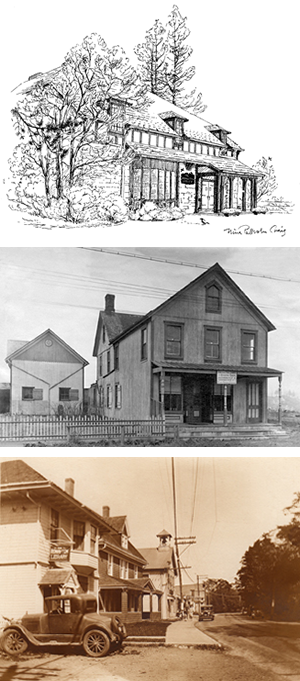Our Mission
Bringing our community together to learn, grow and connect.
Our History
In 1903 the Rowayton Library was organized by a group of public-spirited citizens and housed in a room in Craw's Hall at 101 Rowayton Avenue. It opened with capital of $154, a loan of 100 books from the State of Connecticut for three months and 25 books from the Bodley Book Club to be exchanged monthly. The library was officially incorporated on July 12, 1905.
Having outgrown its first home, in 1926 the library purchased 145 Rowayton Avenue, the former firehouse of the Reliance Hook and Ladder Company (now the Rowayton Arts Center). The library paid owner Frank Machette $5,700 for the land and the building.
The present building and surrounding six acres at 33 Highland Avenue were purchased by the Sixth Taxing District of Norwalk in 1966 to become the Rowayton Library and Community Center. The Tudor-style building, constructed in 1912, was originally part of the extensive estate of James A. Farrell and housed the stables, tack room, and grooms’ facilities. The original windows in the horses’ stalls are still visible from the west side of the building. The library entered into an agreement with the Sixth Taxing District whereby the library gave the District the property and building at 145 Rowayton Avenue and agreed it would continue to perform the services of a “public library” for the community in exchange for their new home for the next 99 years and a yearly funding grant.
The existing Library space was renovated in 2007 down to the hay found in the ceiling. The renovation included the rejuvenation of prized artwork and a renovated children’s room plus improvements to comply with the Americans with Disabilities Act requirements.
In 2012 the building underwent exterior renovation with two major historic preservation matching grants from the State of Connecticut making the building more closely resemble what it looked like when originally constructed in 1912. These included repairs to the slate roof, copper flashing and gutters, restoration of other architectural structures such as the cupola and clock on the roof and installation of underground electrical power.

